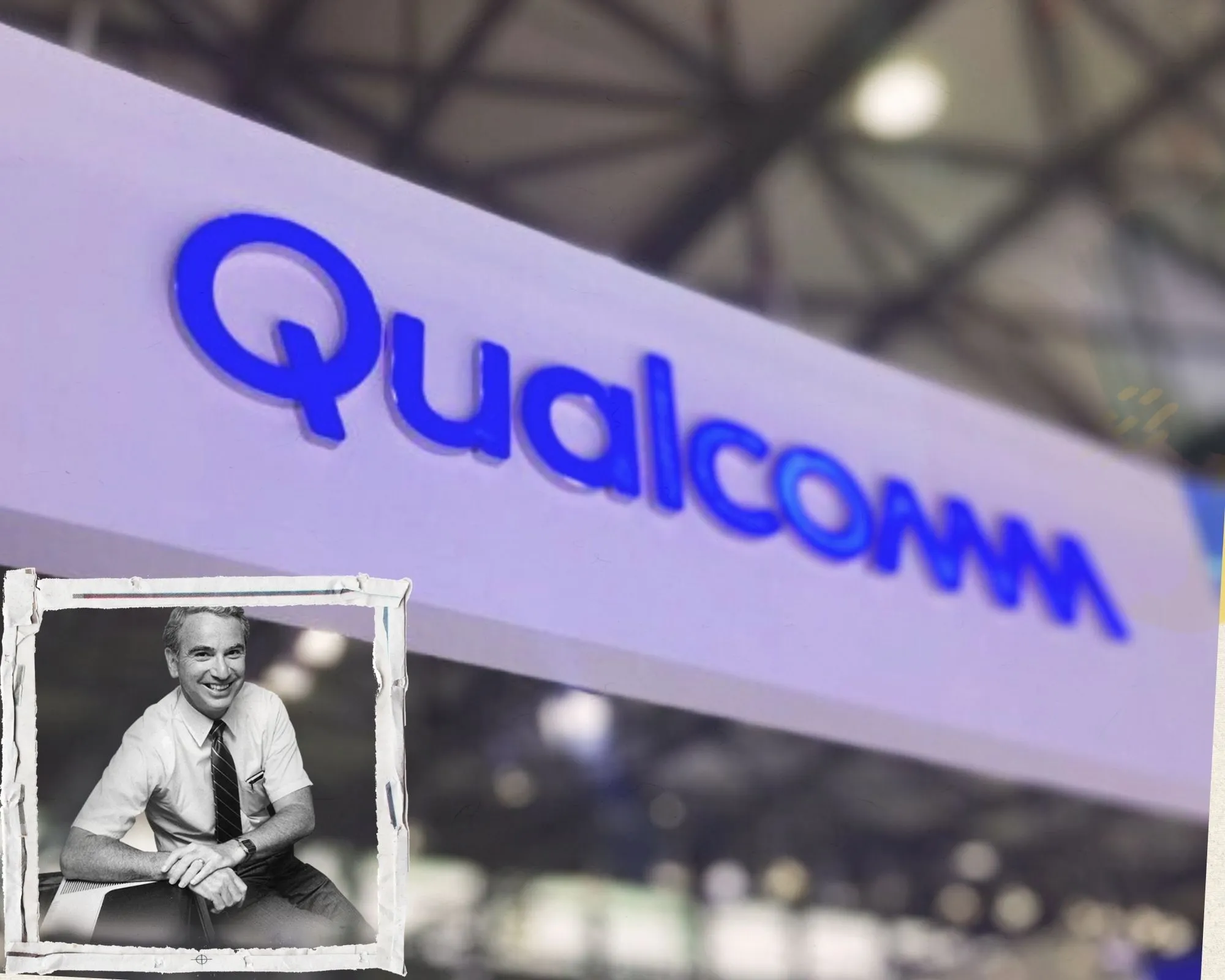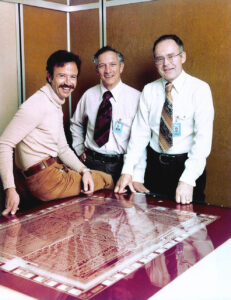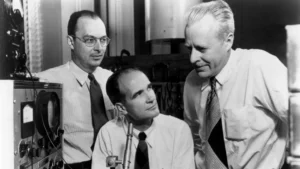Introduction:
Qualcomm is a major American multinational corporation headquartered in San Diego, California, and is legally incorporated in Delaware. The company specializes in creating semiconductors, software, and various services associated with wireless technology. It possesses crucial patents essential for the 5G, 4G, CDMA2000, TD-SCDMA, and WCDMA mobile communications standards.
Founded in 1985 by Irwin Jacobs and six co-founders, Qualcomm focused on early CDMA wireless cell phone tech research. Funding came from selling Omnitracs, a mobile satellite comms system. The wireless industry debated, adopting the 2G standard with Qualcomm’s CDMA patents. This triggered legal battles over patent pricing and licensing.
Throughout its evolution, Qualcomm has diversified into the sale of semiconductor products, primarily employing a fabless manufacturing model. The company has also played a significant role in developing semiconductor components and software for a wide range of applications including vehicles, watches, laptops, Wi-Fi devices, smartphones, and other electronic devices.
Follow us on Linkedin for everything around Semiconductors & AI
No Future in Technology
A misinformed guidance counselor once told Jacobs that science and engineering held no promising future for him. If Jacobs had followed that advice, the world of wireless technology might look quite different today.
Initially, he decided to pursue a different path, enrolling in Cornell University’s School of Hotel Administration based on that counsel.
However, driven by a roommate’s teasing, Jacobs ultimately made a heartfelt decision to switch to electrical engineering.
Read more: Bankruptcy to Trillion-Dollar Company: Story of Nvidia
Its time to be a teacher for Jacobs
The journey took a turn of fate, where Jacobs, once a student, transformed into an influential educator. After completing his doctorate at MIT, he delved into teaching and collaborated with a fellow faculty member to pen down Principles of Communication Engineering, a foundational textbook that continues to guide students to this day. Yet, destiny had more in store.
In 1966, a call for assistance rang from the University of California, San Diego, embarking on a mission to inaugurate a fresh engineering school. In a true leap of faith, Jacobs, accompanied by his wife and their four sons, embraced the opportunity and set forth on a westward journey to answer that call.
“Qualcomm is based on the idea that we will try to be innovative, [to] look for an idea that could make a significant difference.”
— Irwin Jacobs on the company’s vision
Teacher to Enterpreneur
During his time at UCSD, Jacobs joined forces with a few professors from the University of California, Los Angeles to initiate Linkabit Corp—a consulting company that would leave a lasting mark. Eventually, his passion for this venture led him to step away from teaching, dedicating himself entirely to Linkabit until his well-deserved retirement in 1985. The ripple effect of this endeavor was profound.
Engineers from Linkabit went on to become the seeds of over 100 other tech companies in San Diego, nurturing a vibrant hub for wireless innovation. Their collective efforts not only shaped the technological landscape but also forged a legacy of progress and creativity in this thriving city.

Couldn’t brace Retirement
After a humble period of retirement lasting merely three months, Jacobs embarked on a new chapter in July 1985. Alongside six former colleagues from Linkabit, he laid the foundation for Qualcomm. Starting with a bare canvas—no products, no concrete business strategy, and a small team—Qualcomm’s mission was to craft a realm of “QUALity COMMunications.” Little did they realize, one of their nascent ideas would prove to be a catalyst for monumental change, reshaping not only the trajectory of their company but also leaving an indelible mark on the world.
The co-founders included Andrew Viterbi, Franklin Antonio, Adelia Coffman, Andrew Cohen, Klein Gilhousen, and Harvey White.
What was the idea of Qualcomm
During the emergence of the second generation (2G) of mobile phone technology, which were large, clunky devices affixed to car dashboards or floors, Jacobs foresaw a pivotal moment. Phone companies were striving to reach a consensus on a technology standard enabling seamless communication between their devices. The favored approach for many was “time-division multiple access,” where data from multiple phone calls would share the same radio-wave frequency. Data from one call would be slotted into the radio-wave spectrum during silences in other calls.
Contrary to this approach, Jacobs, fueled by unshakable faith in Moore’s Law, envisioned a more intricate method involving frequency-hopping. Instead of binding a particular phone call to a fixed frequency, he proposed shifting call data across various frequencies. This ingenious approach would allow for cramming more calls into the available spectrum space. While many acknowledged the potential of this idea in theory, they doubted its practicality.
Skepticism for Qualcomm
The skepticism stemmed from concerns about voice quality and the possibility of dropped calls. Critics doubted the practicality of moving call data between frequencies and ensuring its accurate interpretation by recipient phones. Jacobs, undeterred, founded Qualcomm in 1985, showcasing his vision. He built a small network with cell towers, proving its potential. The industry soon acknowledged Qualcomm’s system could enhance cell phone call capacity within existing spectrum. This relied on leveraging Moore’s Law to power crucial interpreting algorithms for radio waves.
In later cell phone generations, Qualcomm revolutionized data transmission through radio spectrum. They created specialized chips to decode intricate signals. Qualcomm’s patents became crucial; a cell phone without them was unimaginable. The company extended its reach, crafting modem chips for network communication and application processors for smartphones. These chip designs were monumental, built on tens of millions of lines of code. Over time, Qualcomm’s revenue soared into the hundreds of billions through chip sales and intellectual property licenses.

Major innovations of Qualcomm
Qualcomm has stood as a pioneering force in wireless communication innovation for numerous decades.
Here are some of the key milestones in Qualcomm’s remarkable journey of innovation:
CDMA Technology: In the late 1980s, Qualcomm achieved a groundbreaking feat with the creation of Code Division Multiple Access (CDMA) technology. This digital cellular innovation revolutionized spectrum utilization, gaining widespread adoption by wireless carriers worldwide. CDMA was instrumental in propelling the development of 3G wireless networks, offering accelerated data speeds and a more dependable wireless connection.
Snapdragon Processor: In 2007, Qualcomm unveiled the Snapdragon processor, a comprehensive system-on-chip (SoC) platform tailored for smartphones and diverse wireless devices. The Snapdragon processor stood out for its superior performance, energy efficiency, and advanced features, swiftly establishing itself as a leading platform for mobile devices.
5G Technology: Qualcomm emerged as a frontrunner in the development of 5G wireless technology, promising enhanced data speeds and highly reliable wireless connectivity. The company introduced a spectrum of technologies for 5G networks, encompassing millimeter-wave (mmWave) and sub-6GHz technologies. Its Snapdragon X-series modems gained widespread use in 5G devices, playing a pivotal role in the global rollout of 5G networks.
Wireless Charging: Qualcomm’s contributions to wireless charging technology have been significant, enabling users to charge their devices sans cables or cords. Technologies like Qualcomm Quick Charge facilitate rapid charging of compatible devices, while wireless power technology empowers the charging of smartphones, tablets, wearables, and more wirelessly.
Bluetooth and Wi-Fi Connectivity: Qualcomm has made substantial strides in wireless connectivity technologies, including Bluetooth and Wi-Fi. Their Bluetooth technology facilitates wireless communication between devices over short distances, while their Wi-Fi technology provides high-speed wireless internet connectivity.
Conclusion:
Qualcomm’s significant innovations have left an indelible mark on the wireless communication landscape, shaping the modern world of interconnected devices. The company continues to drive innovation, steadfast in its commitment to advancing technology for the betterment of people’s lives.
Reference & image credits:
[1] https://www.qualcomm.com/research/stories/man-behind-billion-connections
[2] Chip war by Chris Miller



